-
The Gospel of Trees

The hallelujah chorus that I woke to every morning was symphony sung by roosters and herons, backed by the beat of the clicking cicadas and the low whirring tick of the fan. Kicking aside thin sheets, I scratched fresh welts on my ankles and watched as a lizard flicked his tongue, then crept on padded toes toward the blood-drowsy mosquito. From the kitchen, the smell of pancakes with imitation maple syrup, carefully rationed to compensate for the sharp tang of Haitian honey. And after breakfast? An unending parade of distractions.
I’m staying up way too late enjoying the missionary kid’s memoir The Gospel of Trees. Set in Haiti and northern California, it perfectly balances the heroism and deep disappointment twined around being the child of parents who believed they could change the world.
-
a book in context

I started the The Good Earth, published 1931 by Pearl S. Buck, mid-December in the two weeks after Joe’s brother died; wretched strange weeks when the girls and I were sick with one morphing virus, a flu-cold, flights were delayed, our planes home sat on the tarmac then skid into airports hours late, we seemed to tuck them into bed, fall asleep listening to them cough, and then drag them out again before the sun even bothered to wink awake.
At the memorial service for their uncle the girls crumpled with me in a back row in grumpy feverish moods, wiping their snotty noses over and over, hiding their flushed faces in their elbows as old friends of the family stopped to say hello. The service was beautiful but our children weren’t, a fact that both prickled our pride and seemed fitting. One family member dead and well remembered, the rest alive and hard to look at. Each morning I woke up expecting our hack-coughs to be emptied overnight, no. Meanwhile our hero Wang Lung gratefully accepted his morning bowl of hot water, in bed, served by his new wife just after she carefully stoked the fire and served another bowl to his father.
Naturally there was no mention of Christmas on the pages of The Good Earth–though there is occasionally a fearful and fitful devotion to various gods, grabbing an incense stick when things seemed worrisome, cursing them loudly when things fell apart. Wang Lung’s marriage to O-lan is pragmatic, met with unexpected kismet and peace, yet there is still the unerasable impact of O-lan’s deprived childhood–the details of which are eluded to only vaguely. Wang Lung made no move, ever, to fix or soothe what had happened to her. Meanwhile I chased the girls with ointments of various types, devoting fifteen minutes to cajoling a smear on their red skin that was raw from their furtive side-wiping. The girls seemed to collectively give up eating, their proud young playground muscles almost immediately disappearing into knobby knees. At a certain point all three began to watch me as nothing but a kleenex threatening an attack on them. I fell into the role, really, it was almost impossible for me not track their snuffles and new symptoms with a graph chart.
Steadily I closed my senses to the american christmas hoopla around us that did not frame our Christmas this year at all. The sweet heaven-bound songs of the memorial service rang instead of carols, toast and soup replaced hot cocoa, sleeping late and watching movies, often oblivious to the accomplishment of festive traditions around us. Joe and I mostly looked at the girls, but when we managed to look at each other it was difficult to avoid the topic of missing Ross or preemptively imagining how sad this or that were going to be without Ross. Steadily Wang Lung remained devoted to his land, wholly disinterested in political events in his country and often oblivious to anything beyond the demands of his social structure. The narrative pours out like hot tea, the irony-free meditations faintly fragrant and soothing. Pearl Buck was the child of American missionaries, she held the duality of American and Chinese worlds in her mind, but she loved the Chinese one most, I think. Her flattering sketch of the countryside, the affectionate description of the “loaf of bread wrapped around a stick of garlic,” the laboring, planting, harvesting, well-earned resting that framed Wang Lung’s noble year. The pre-revolution farmer peasant world was harsh indeed, but you can tell she loved it. The GOOD earth.
-
Cold Weather Reads
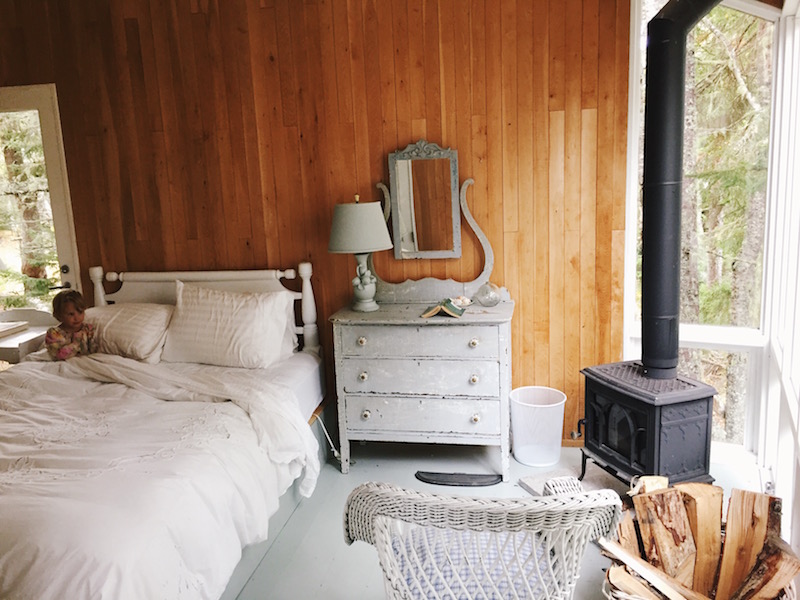
It’s dark in the morning and dark over dinner, there are cranberries at the farmer’s market and foggy blue squashes on my neighbor’s steps–it must be autumn on the east coast! It feels like everyone in this little family is reaching for a book these days. Between my own book, and the pile of books Joan carts over to me every morning, I seem to spend most of my day reading–which is ideal!
Here’s what everyone is enjoying right now…
Joan, 3yrs old, friendly Halloween books and cozy stories, best read by the stack: The Soup Bone, Halloween Pie, Treasure Hunt, Each Peach Pear Plum.
Lux, 5yrs old: Lux is going to be Medusa for Halloween, a character she fell for after we read Athena. She is so intrigued by all the Greek Gods right now so I was happy to order other books from this illustrated and historically-accurate Olympians series for her. Please note: these are violent and selfish characters, and though I feel comfortable introducing these themes (I vastly prefer them to the same themes introduced in Marvel comic-types), you may not!
Rachael: I just finished Barbarian Days, a surfing memoir by a New Yorker staff writer. The first part and the last part of the book are the best. In the first part, he is a middle school outcast in Hawaii, who grabs his surfboard first thing in the morning. In the last part, he’s in his forties, fifties, and sixties–a successful writer settled in New York, still chasing waves. I had to skim a lot of the wave-description parts throughout, but I loved his humble storytelling style, his affection for the characters in his life, his wry theories about the surf obsessed. You will never look at a surfer the same way again.
Next: I think I’ll try The Everlasting Meal again. I couldn’t get into last time I tried, but a friend argued that it was best read in cold weather as it’s all about roasting, grocery shopping with economy, and planning ahead. Yes please.
Joe: Joe is finishing Substitute, Nicholson Baker’s somewhat dreary nonfiction chronicle of substitute teaching in a Maine public school.
If you’ve never read Nicholson Baker, his fiction title A Box of Matches is absolutely the best cold-weather read! It’s a love letter to fireplaces and thoughtful dark mornings.
What are you reading?
-
Night Sky Party
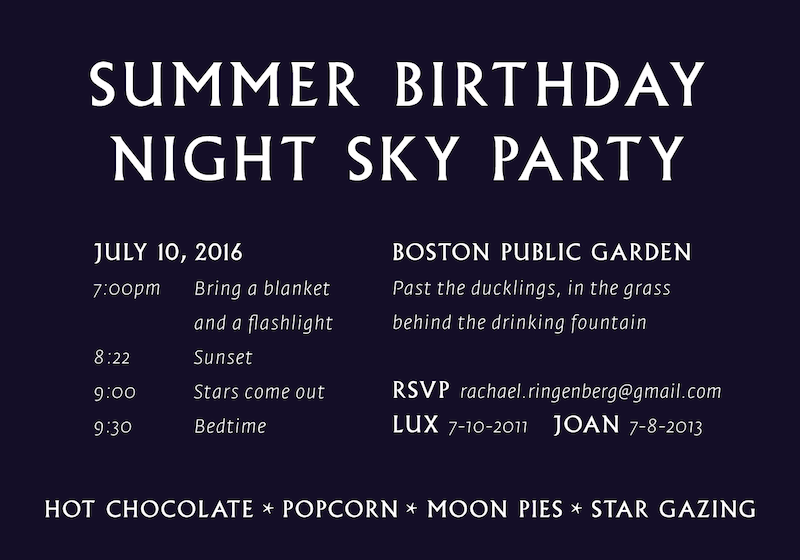
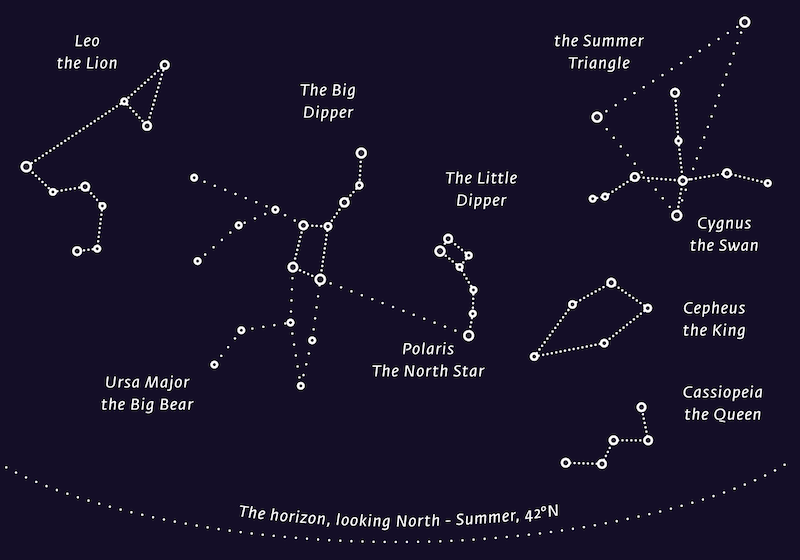
a star party, for our girls who love the moon, constellations, and the stories behind the constellations. ^^ invitation postcard, back and front. Designed by Joe, and the included star chart is really useful to have! ^^
July has been beautiful in Boston, but the night we chose for the outdoor in-the-park party was cloudy and cold. I had visions of a quilt of blankets in the Public Garden, children with flashlights weaving through the trees, but oh well, maybe next year.
We stuck with the special post-dinner time, but moved it indoors.

A few photos, all taken before the party started, of course…
Joe and Lux gave their finest effort to making moon pies for the evening, but the recipe was junk and they turned out like so. I think the idea of moon pies popped into my mind from one long ago teenage summer spent reading Ellie’s People, young adult novels set in an Amish community. The story’s characters were always going to picnics, building barns, and looking forward to moon pies. (it turns out the Amish moon pie is different from what I imagined, it is similar to an apple hand pie.)

After the moon pies crashed on us, we turned at the very last minute to an icebox cake made with chocolate wafer cookies and whipped cream. I’m so happy we discovered this dessert because it’s incredibly easy to make and the girls ended up making their own with the leftover ingredients–it is really so fun. I put it in the freezer the day before. Frozen it tastes like a cake version of cookies-n-cream ice cream, and it was delightful to share the icy slices in a warm kitchen with our friends.
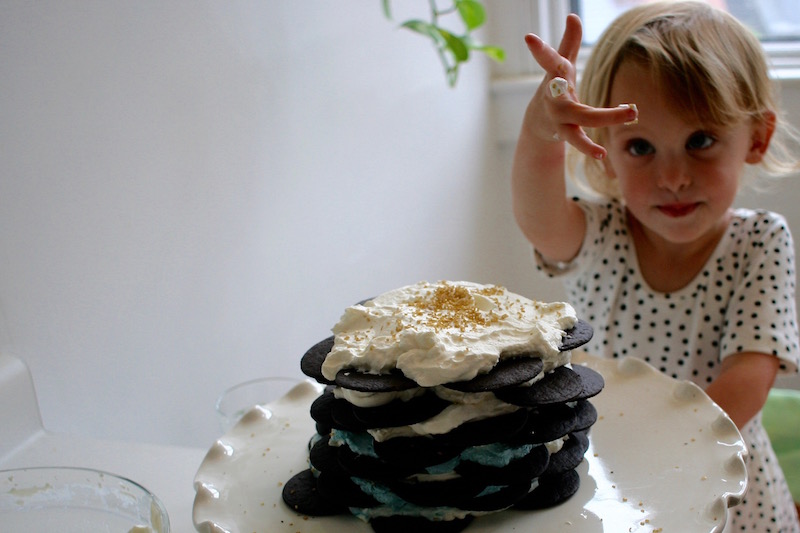
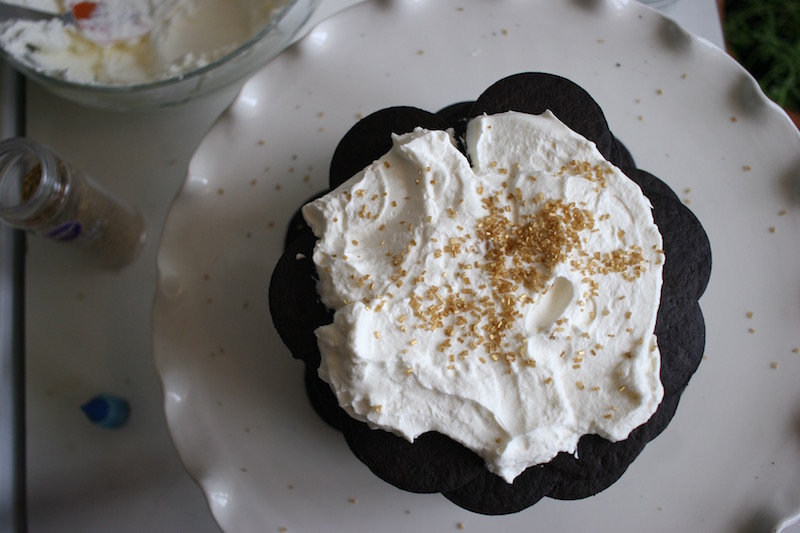
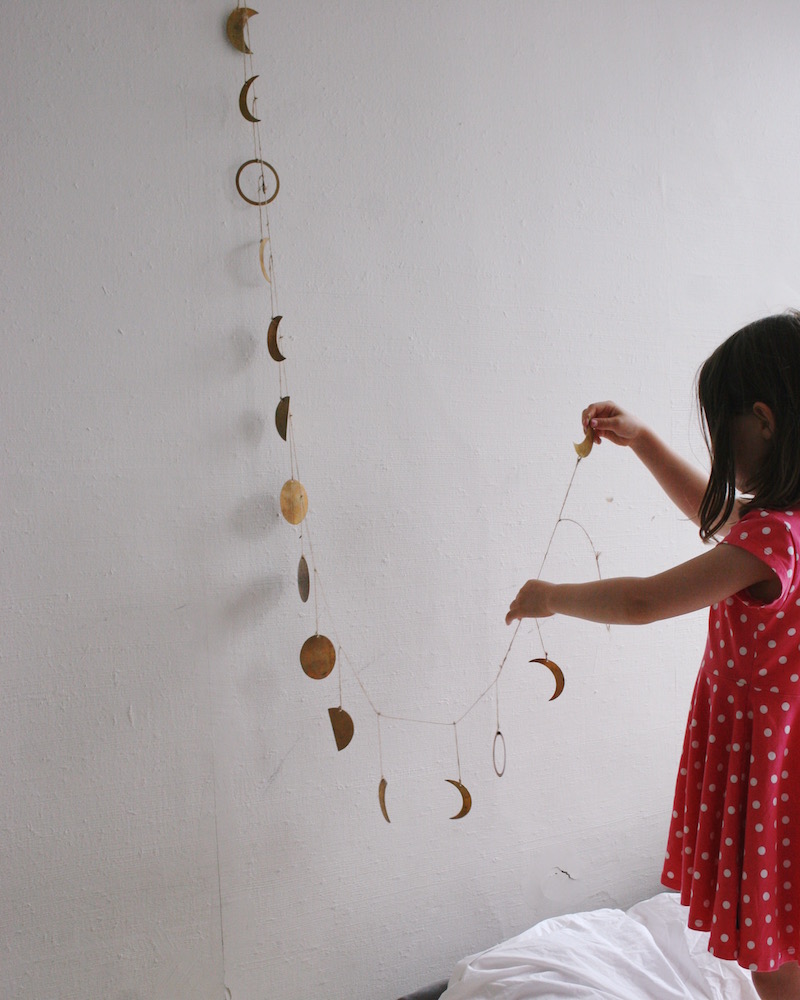

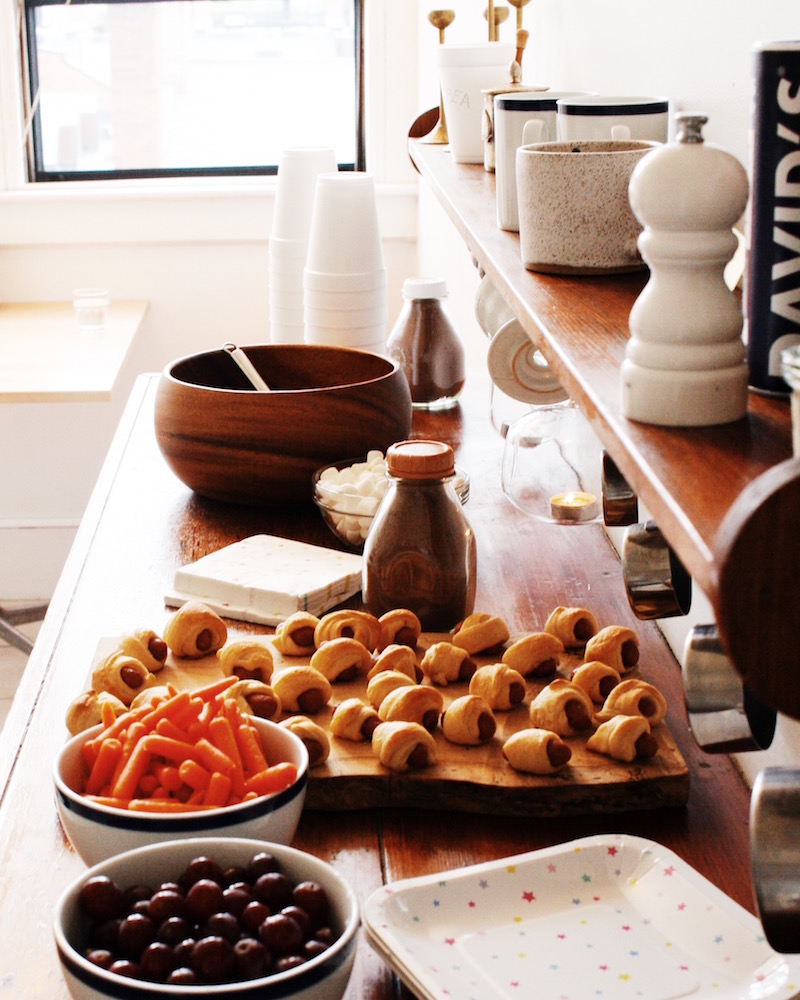
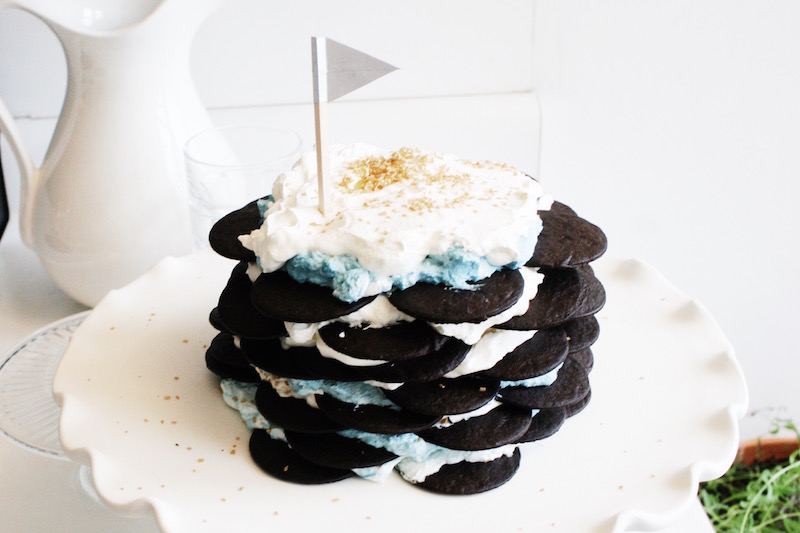
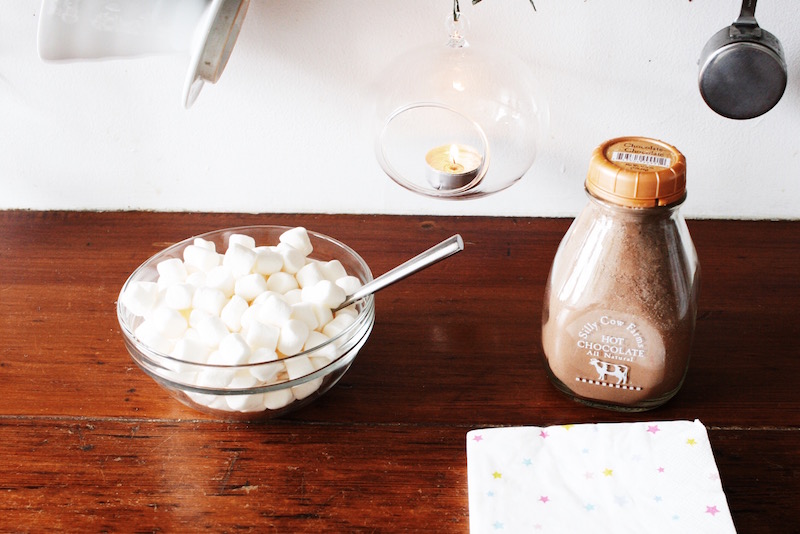
We dimmed the lights, and put little ikea lantern lights in the dark stairwell. Joe helped the kids make a star can, something we use frequently for indoor star shows. Buy a tin coffee canister, empty out the grounds, and use a can opener to cut off the bottom. Cut out the inside of the plastic top, leaving the edge. Cut out circles of paper, punch the holes for the constellation pattern (the big dipper being the easiest of those, looks similar to this) and put the circle of paper under the lid. Then shine a flashlight through to project the constellation on the wall. We’ve also made fun, non-constellation shapes like cat’s faces and bunnies.
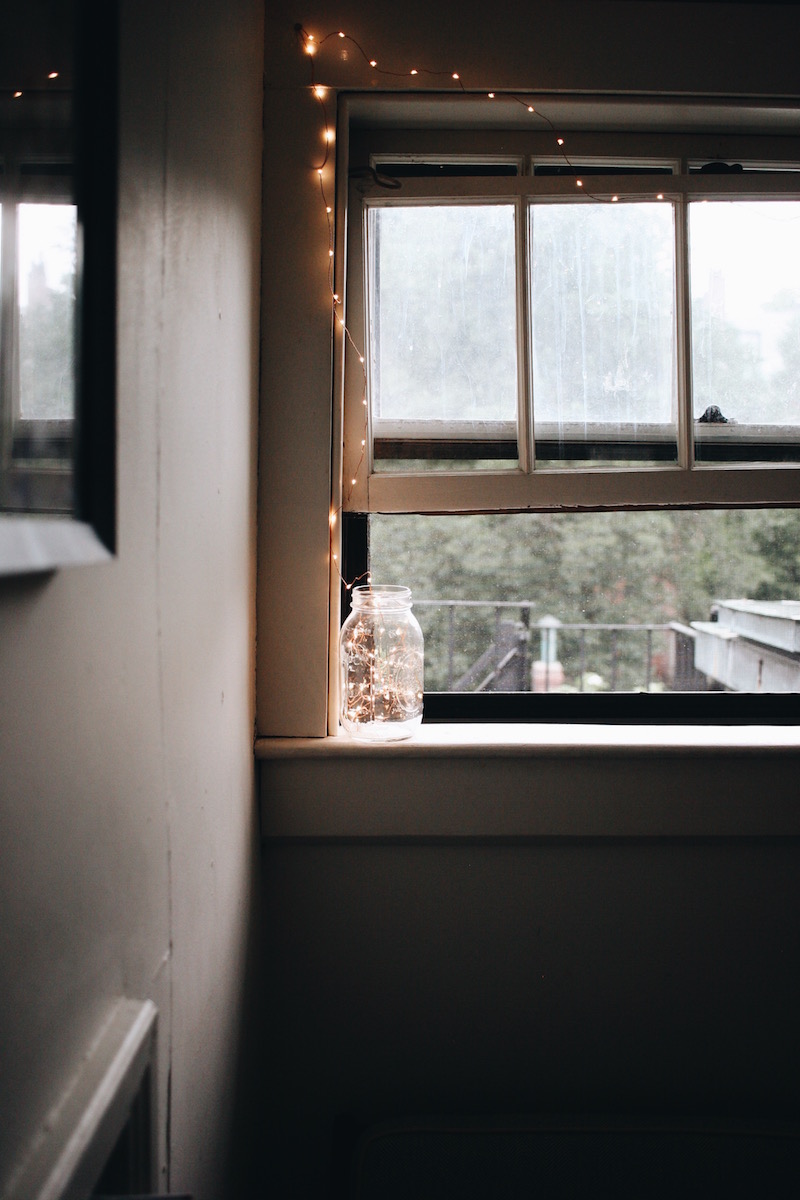
Lux originally fell for the stars peering out of her bedroom window at night, during the very-early-dark winters we have here in Boston. She could see just a few constellations, and it so happened that Lepus, the bunny constellation, was one of them!
I don’t know if it’s something about this age, the amazing brains of five year olds!, but we also attended a friend’s five-year-old Rocket Ship Party, and I’m loving the photos from Hudson’s Astronaut Pool Party. Interestingly, our girls aren’t really interested in the gear/gizmos of space travel, just the planets and stars of space.
Our two favorite books on the stars are H.A. Rey’s The Stars and Find the Constellations. And we’ve saving up for one of these incredible constellation quilts from Haptic Lab.
-
Chai and good books

Two birthday gifts above–a package from Bellocq tea and a new mug. The Bellocq tea parcel and elegant tea strainer tugged me back into the romance of chai tea making, something I loved experimenting with awhile ago, and then forgot about (one good place to start, if you’re interested, is this food52 discussion on masala chai). Mythological chai seems to crest on milky sweet and spicy flavors with the tannic black tea filling in the rest of the wave underneath. No matter which path you choose–boiled milk, added sugar, extra spice–it takes time to make, so you anticipate it all the more, and sip it all the slower. (And for decaf fans, there’s a rooibos blend.)
I’m in so deep with the amazing Italian Elena Ferrante novels. Should you be so lucky to have not encountered these yet–the delight you have before you now!–you might as well buy them now en mass and mark off the next week or two of consciousness to read them. There’s no use putting yourself on the library waitlist because there are four volumes and once you finish one, it’s all you’ll think about until you have the next one in your grasp. I’m tempted to say that everything people like about tv shows like the Bachelor is in these books–heartache, affection, friendship, ambition, betrayal. That sells them short, they are so much more than that, but it also sounds right.
Beach read as a term doesn’t make much sense for me because I’m terrible at reading in direct sunlight, but let’s interpret it to mean you can leave off the page and start back up again in a moment. These books are absolutely that.
I’m reading all of them on my kindle, which allows for a few pages before bed and a few more pages in the morning light (I have the kindle voyage, with adaptive lighting) before anyone else wakes up. They have consumed my last few weeks.
Ferrante describes feelings through faces–the characters’ skin, bones, and eyes reflect their inner feelings. One day a hustling teenager may look like a weary old woman, another day an old woman will convey the joy of a carefree youth. I think this is true in everyday life, but rarely do you encounter an author who can describe it so exactly.
The fact that they were translated from Italian by New Yorker editor Ann Goldstein–and that she learned Italian later in life–is making me want to pull out my old Italian texts from my semester and summer abroad. Funny fact: because of the history of the neighborhood Lux’s kindergarten is in, all students take weekly Italian classes. I wonder if she’ll remember any murmurs from visiting at age 2.5. We’ll have to plan a celebratory return trip after her first year.
-
retelling
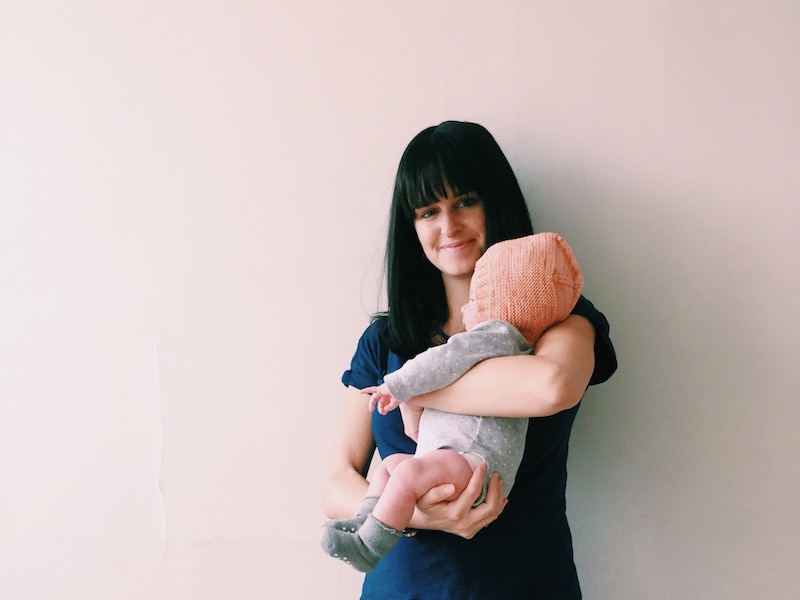
None of my clothes quite fit in a way I like, so I got bangs instead. I need a little high self-maintenance in my life.
The girls love to have their nails painted. Joan manages to stay at the table and let them dry for fifteen minutes after I paint them. Later she comes back with three of them completely rubbed off from activity. “You forgot to paint these,” she says.
I’m reading The Magician’s Assistant. The main characters names are Sabine and Parsifal. So pretty. I think Ann Patchett might be my favorite light fiction. It’s still beautifully and carefully written, but the stories are fast and the relationships are so engaging. This title was briefly $2 for kindle edition, a fact I found out from this lovely list.
The girls have started retelling stories of good and bad things. “Remember that silly guy?” “Oh yeah the one with the hat?” “Yeah.” <laughs, giggles> But also, “Remember at the playground, that mean boy who said ‘I’ll push you if you don’t get out of here?'” <solemn faces> Again and again. Until playground = mean kid. Who was there but once, who at the time they simply shrugged at, but now he has managed to sweep all other memories aside. It frustrates me. After the twentieth retelling “Ok,” I say, “We’re not telling that story anymore. Lots of other nice things happened at the playground. We’ve met so many other friends there.” I’m not sure what else to say–ideas?
-
review // Better Than School
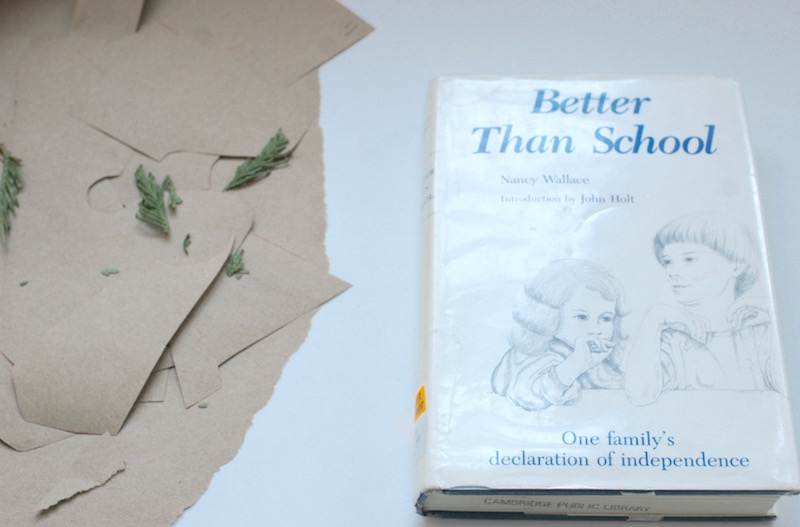
This is a nice read from the ’80s that I stumbled on at our library. It was written when homeschooling was just becoming legal in New Hampshire through a complicated approval process. When it was published, my mom was in Michigan where homeschooling was not yet legal, and she was just beginning to homeschool my older brother. One did not call the local school board and alert them of your plan to keep your kids home, fill out the paperwork, and present your case–as Nancy Wallace, our narrator, did. In Michigan, and many other states at the time, one simply stayed off the grid entirely.
The story follows a very relatable progression: parent proud of their kid’s curiosity and abilities, kid begins school, kid becomes anxious/withdrawn, teacher is too overwhelmed to respond, parent is confused but angry, end school.
Nancy documents her concerns as she eases through the process of deciding to school at home, the mental devil’s advocacy that she plays, the dithering, back and forth-ing. It’s always nice to have a narrator like Nancy who likes research, because they dart around in front of you, the reader, looking things up and solving problems. She relays the small troubles and hurdles of shared life. There’s a bit where she shares from her son’s journal about what he thought he was learning; a refreshing reminder of the small parts of a day that stick out as big in kids’ minds. She shares methods that failed for them, or worked well, and then were dropped anyway, replaced by straightforward ones.One of my favorite parts was towards the end, when they decided to move from rural New Hampshire to a busy university town in New York. She had many expectations of how it might change things for her children–more friends, more activities, different interests. A few of her expectations came to pass, many of them did not. Her children turned out to have the same social interests, no matter if they were in a neighborhood of twelve children, or two.
I always read these things with an eye to spot the mom’s own survival secret. In Nancy’s case, every day she’s able to hand both children off to her freelancing husband at 3pm–at which point she spends a solid three hours to herself, prepping dinner at the end of that time. She luxuriates in this fact, though she doesn’t state outright that it is what is keeping her alive. She has two other influencing factors that help her enjoy homeschooling: she’s intrigued by everything her children study, that is, she wants to learn nearly everything alongside them. And she views her time with her children as a precious, ever-shrinking resource as they age.
Better Than School is a soft, memoir-styled read that anyone toying with educating outside the system would enjoy. It’s available used on Amazon for the price of one dollar!
-
winter nonfiction
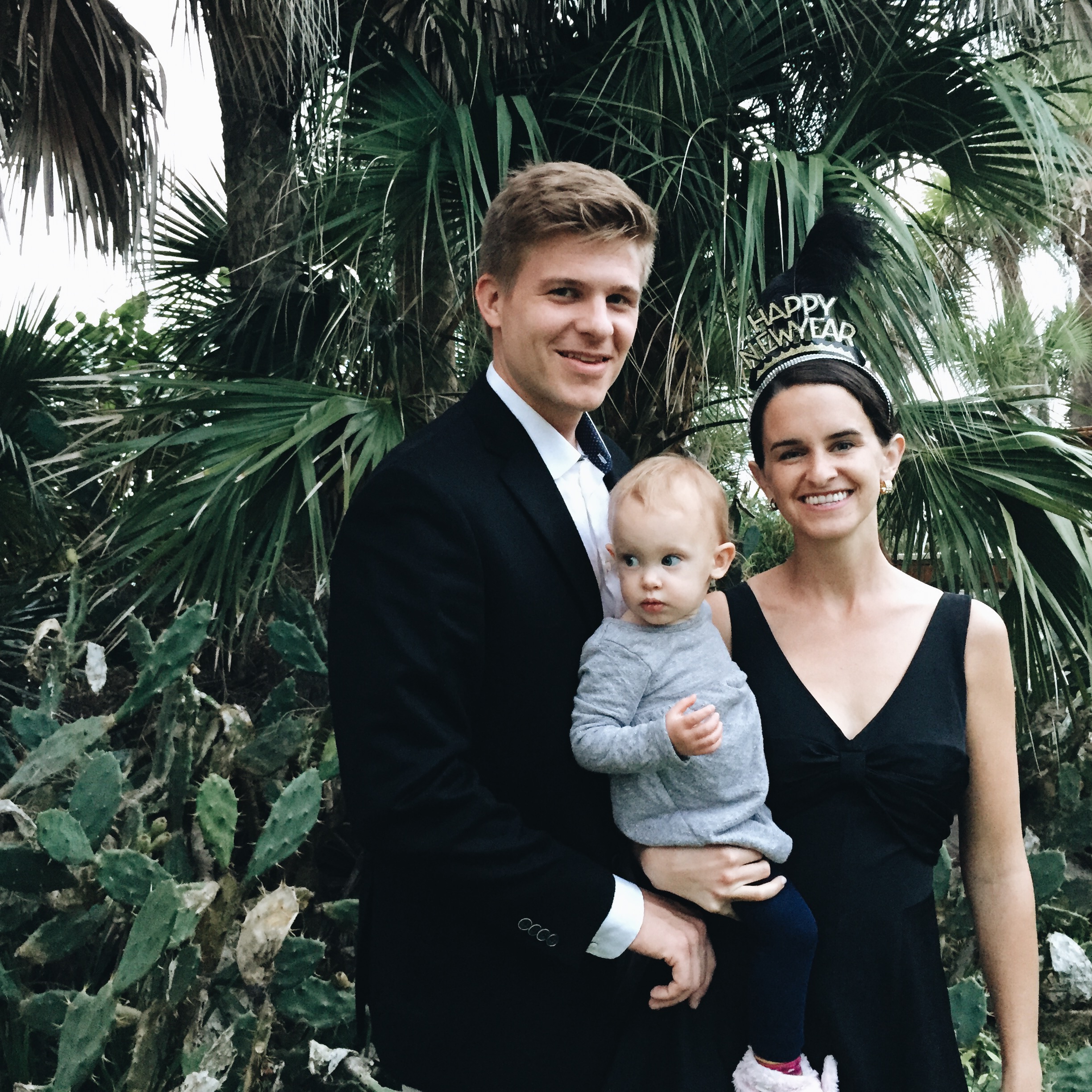
I finished a French memoir from the ’60s over New Year’s. The Paper House, by Francoise Mallet-Joris (yours on Amazon for the price of one cent!) It’s a memoir, but more of a catch-all journal of ruminations for this woman who was an intellectual force of her time. She recounts arguments with her housekeeper and tiffs with her husband over household tasks. She has something of an intellectual crush on her aged hairdresser. She smokes, drinks, types on her typewriter, makes dinner, conducts television interviews, attempts to get work done. Her household is populated with her partner, her three younger children, and an older son from a previous relationship, a son she gave birth to when she around 20, who she regards almost as a peer, if not a confident.
The respect she displays for her children and their opinions reminds me of Shirley Jackson’s Life Among the Savages. A book (this one from the ’50s) by another female novelist who also seemed to regard her young children as fellow thinkers that happen to live alongside her.
Francoise spends many, many pages baffled at her household’s constant state of chaos. She describes sitting in her bath with a cigarette to get a moment’s peace. Then her housekeeper plops down with her in the bathroom, also to get a moment’s peace. All of Francoise’s children and her housekeeper’s child troop in shortly thereafter. Every organizational task seems to elude her. She personifies the curtains that never seem to exist–she hopes they will come to visit her someday, she hopes they will settle with her family at some point.
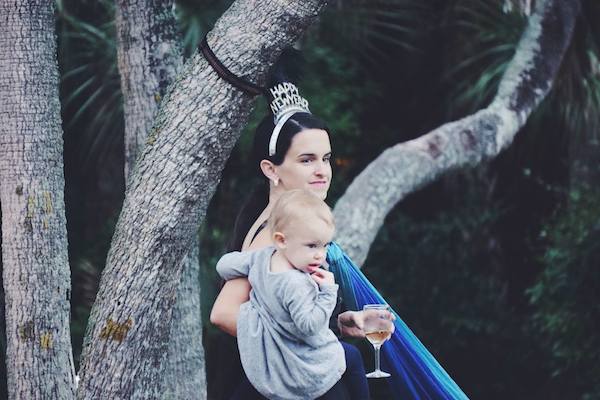
She relays wonderful conversations with her children about religion (she’s roman catholic). She sets out to stay the party line, to tell the doctrinal truth, but is quickly confused and trapped into agreeing to strange things by the way her children phrase their questions. Most of the dialogue she shares depicts her bravely arguing a point only to get talked out of it. Exactly how I imagine my discussions with the girls going someday.
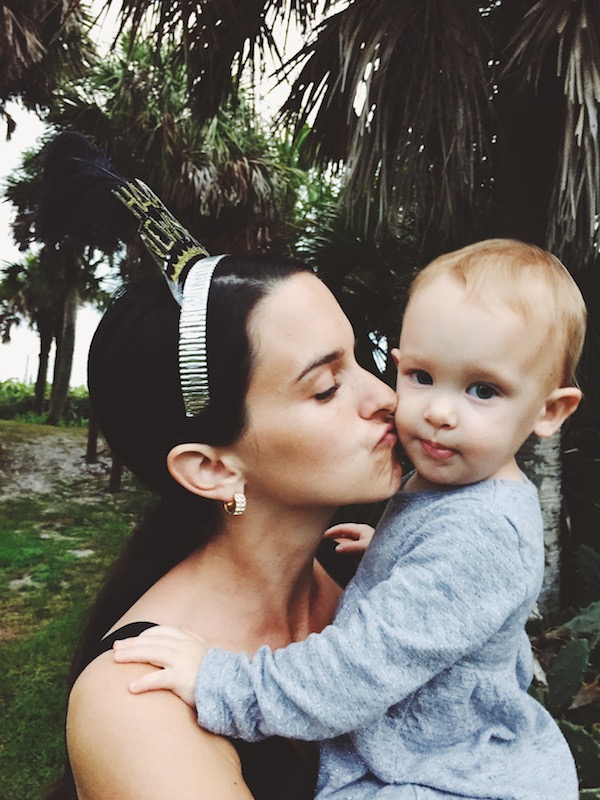
I don’t really have a clean-clasped way to tell you why you might like to read it, except that you might.
And now I’m reading the journals of Lucy Maud Montgomery, the lady writer of the Anne of Green Gables series. They are quite a different thing. She struggled deeply and lonelily with depression, with isolation and with the terrifically cold and dark winters of Prince Edward Island. She is as wonderful as you’d imagine, but haunted in many ways. I’ll write about them when I finish them, but Francoise handed me off to Lucy in some way. Women. Thinkers. Rejoicers and puzzlers, unedited for the most part and mulling over life.
It is a gift to one’s conscious to read things, honest boring brilliant passing things, like this. Particularly in the winter? They can be metronome, a tick tick of real households to balance your world against.
photos from New Year’s Eve, with one by my friend Elizabeth Mclellan. Because they felt wintery.
-
review: the smartest kids in the world

My friend Ashley lent me The Smartest Kids in the World by Amanda Ripley before Christmas and I ate it up as we traveled. It compares education in South Korea, Finland, Poland, and the US by following exchange students from Oklahoma, Pennsylvania, and Minnesota. Along the way she discusses international testing, interviews teachers and students, and gives a sense of what it’s like to be a kid learning in each of these countries.
Before I read it, when I thought about education and my little family, I imagined us focusing on reading together and verbal comprehension stuff before formal schooling began. Reading together is probably one of the activities that comes to me the easiest in child-care. Joe has mentioned to me before that it might be nice if I started doing math with Lux, and perhaps science experiments, once in awhile. I told him I thought those things came in time. Maybe intuitively? Maybe when they were six? It was all vague and far away. Perhaps I wouldn’t even be the one to introduce them to math at all, I thought to myself. Suffice to say, it wasn’t on my priority list.
Now I know through Ripley’s book that this is a specifically American view: that one learns math through story problems and osmosis, certainly not through worksheets, repetition, or emphasis. I had heard rumors that the US tested miserably on most fronts in comparison to other developed nations. Now I recognize that in the context of math, we don’t seem to take it seriously, we don’t think it’s an applicable life skill, and we’d rather our kid took an easy test and did well than get a bad score and feel bad about themselves.
Which led me to wonder how I could help my kids be as good at math as they were at reading. How to be as casually conversant in equations as explaining a new vocabulary word. How to value rote memorization and convey its value. How to make numbers as familiar and intriguing as a new library book.
This is all on my mind right now because after Lux hit 3.5 years, she’s able to focus a bit more and has really got that sponge quality to her. I can actually imagine us sitting down to work on something for a bit, or learning and reviewing something over a couple of days. We’ve recently done a couple science experiments, things like vinegar + baking soda + balloon, and they were really fun.
Anyway, it’s a fascinating read and helped me correct my sights a bit on education. Since reading is a given for us, I’m going to be more aggressive with integrating math and science into our days. To start, I ordered this simple workbook to do with Lux for twenty minutes or so, when Joan is napping. I’m hoping it will help me familiarize myself how she approaches these things and give us a shared language.
-
The Orangette Reading

photo from this morning. The lilacs in the city are in bloom!
It’s easy to add up the ways Molly has influenced my life because all of them are tangible and concrete. I make the oatcake recipe she borrowed from 3191 Miles Apart for many play dates, always to accolades. Her writing introduced me to The Breakfast Book, the now-most bespattered cookbook on my shelf, the foundation of many cozy mornings. Her blog introduced me to my now-internet friend Andrea of Book-Scout, the blonde bookworm of Portland.
I was so happy to be in a basement in Wellesley last night, listening to Molly talk about her life. Happy to have a new book in my hands, full of stories of food and experimenting and taking risks for dreams. Happy to leave with my friends and walk next door to share crusty bread and pink cocktails and split a butterscotch budino at the end.
At the reading I spotted Jess Fechtor of Sweet Amandine, a food blog she writes from Cambridge. I’ve liked Jess’s writing for a long time, and it was treat to meet her in person. She was towing along her littlest newborn daughter and accompanied by her friend Andrew Janjigian (on twitter here), associate editor of Cook’s Illustrated and pizza-dough-expert. It just so happened that I’ve had several concerns the last few times I made pizza, namely: 1/ does parchment paper placed on top of my pizza stone negate the crisping power of the stone? 2/ Is the new baking steel now more legit than the long-favored baking stone? These questions jumped to the front of my mind when Andrew mentioned he occasionally teaches pizza-making classes out of his apartment! I was delighted he allowed me to corner him for a few minutes with pedestrian-sometimes-baker concerns. Please forgive me for finishing up this long tangent, but for those of you who also love homemade pizza: Andrew recommended getting a super peel to solve the depended-on-parchment problem, and verified that the baking steel was the real deal, not just a trend.
Anyway, there we were, waiting for Molly to sign our books, surrounded by more books, lined up next to people who were just as curious about the next food-book event in Wellesley: a book signing with Jeni from Jeni’s Ice Cream, talking about dough, and good writing. It was my ComicCon moment: the happy glory of these are my people and we are happy here.